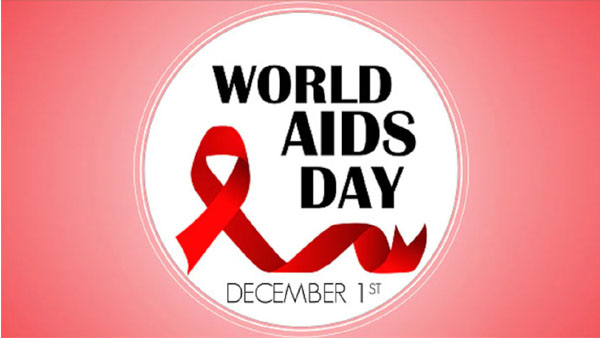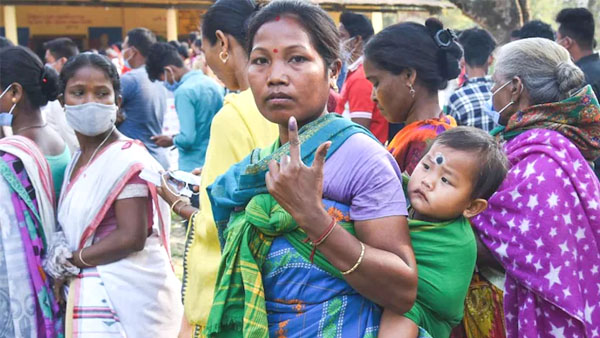Dipak Kurmi
World AIDS Day, marked annually on December 1, remains a powerful symbol of global solidarity in the fight against HIV/AIDS. Beyond a date on the calendar, it represents a worldwide commitment to remembering those lost to AIDS-related illnesses, supporting individuals living with HIV, and challenging the stigma that perpetuates the epidemic. Since its inception in 1988, World AIDS Day has evolved to address the multifaceted challenges of this ongoing health crisis, affecting millions across generations and regions.
A Historical Foundation for Advocacy
World AIDS Day was established in 1988 by the World Health Organization (WHO) and the United Nations, spearheaded by James W. Bunn and Thomas Netter. Their vision aimed to create a day dedicated to raising awareness and fostering collective action against the epidemic. December 1st was deliberately chosen as a moment for global reflection and renewed focus on health initiatives. Over the years, this observance has grown into a platform that not only highlights progress but also underscores persistent challenges in combating HIV/AIDS.
Themes selected annually for World AIDS Day guide conversations and priorities, focusing global attention on areas of urgent need. These themes, whether emphasizing prevention, education, or human rights, align the global response to ensure no individual is left behind.
The Importance of World AIDS Day
The relevance of World AIDS Day lies in its ability to spotlight the ongoing challenges posed by HIV/AIDS. The epidemic has claimed over 42 million lives, with approximately 39.9 million people living with HIV by the end of 2023(HHHHHHHHHHHHH). Despite remarkable advancements in treatment, testing, and education, stigma and systemic inequalities continue to create barriers.
World AIDS Day fosters awareness by empowering individuals with knowledge about prevention and treatment, enabling communities to combat discrimination. It mobilizes political will and financial resources, ensuring governments and organizations renew their commitments to tackling the epidemic. Furthermore, it reminds the global community that the fight against HIV/AIDS is a shared responsibility that transcends borders.
The Symbolism of the Red Ribbon
A powerful emblem of solidarity, the red ribbon emerged in 1991 as a product of the Visual AIDS Artists Caucus. This group of New York-based artists sought a symbol that would evoke compassion for those affected by HIV/AIDS. Inspired by the Gulf War’s yellow ribbons, the red ribbon was chosen to represent love, passion, and unity. Its simplicity allows individuals worldwide to participate in spreading awareness and advocating for change.
Today, wearing a red ribbon signifies remembrance and a commitment to end HIV/AIDS, embodying a collective will to fight discrimination and promote hope.
2024: “Take the Rights Path: My Health, My Right!”
The theme for 2024, “Take the Rights Path: My Health, My Right!”, highlights the interplay between human rights and healthcare equity. By framing health as an inalienable right, this theme calls for systemic changes to dismantle barriers such as poverty, gender inequality, and societal stigma. It emphasizes empowering individuals to claim their rights, ensuring access to life-saving treatments and services without prejudice.
This theme reflects the broader objectives of achieving health equity by addressing social determinants and fostering inclusive healthcare systems. Governments, civil society, and individuals are urged to prioritize rights-based approaches to accelerate progress.
India and the Northeast: A Regional Focus
India is home to approximately 2.3 million people living with HIV, making it one of the largest national epidemics globally. The Northeast region, including Assam, Manipur, and Nagaland, experiences unique challenges due to socio-economic factors and limited healthcare infrastructure. Intravenous drug use, particularly in states like Manipur, significantly drives new infections.
Efforts by the National AIDS Control Organization (NACO) and regional NGOs have sought to address these issues through targeted interventions, harm reduction strategies, and awareness campaigns. Despite these efforts, stigma, lack of testing, and inadequate access to antiretroviral therapy (ART) continue to hinder progress.
Global Trends and Regional Statistics
Globally, the epidemic has shown significant progress, with a 51% reduction in HIV-related deaths since 2010 (HIV Statistics, Globally and by WHO Region, 2024). However, gaps remain in achieving the 95–95–95 targets (95% of individuals knowing their status, 95% receiving treatment, and 95% achieving viral suppression). By 2023, only 77% of people living with HIV globally were receiving ART, leaving millions without adequate care ( HIV Statistics, Globally and by WHO Region, 2024).
In the WHO South-East Asia Region, 4 million individuals live with HIV, with 66% receiving treatment in 2023. The region’s success in reducing new infections and deaths highlights the potential of sustained public health strategies but underscores the need for continued investment and education ( HIV Statistics, Globally and by WHO Region, 2024).
Sustaining Momentum Beyond December 1
World AIDS Day is a starting point, not the culmination of efforts. Beyond December 1, communities and governments must continue their advocacy, education, and support for those affected by HIV/AIDS. Addressing stigma and expanding access to healthcare are essential components of long-term strategies.
For individuals, this commitment can take the form of year-round volunteering, supporting local organizations, or advocating for comprehensive sexual education. Policymakers and healthcare providers must translate pledges into concrete actions, ensuring that progress is equitable and sustainable.
World AIDS Day is a powerful reminder of the collective fight against HIV/AIDS, emphasizing remembrance, action, and hope. The theme for 2024, “Take the Rights Path: My Health, My Right!”, encapsulates the urgency of ensuring health equity and empowering individuals to claim their rights.
In India, and particularly in the Northeast, addressing the unique socio-economic drivers of the epidemic requires targeted interventions and a commitment to eradicating stigma. Globally, the progress achieved thus far must inspire continued advocacy and innovation, ultimately bringing us closer to a world free from the shadow of HIV/AIDS. Let this day—and every day—serve as a call to action, ensuring no one is left behind in the journey toward health, dignity, and equality.
(the writer can be reached at dipakkurmiglpltd@gmail.com)




